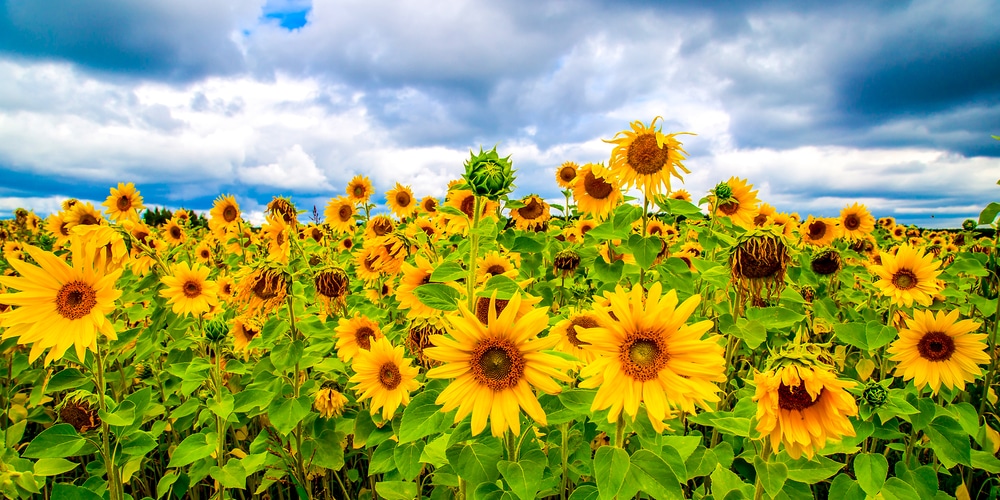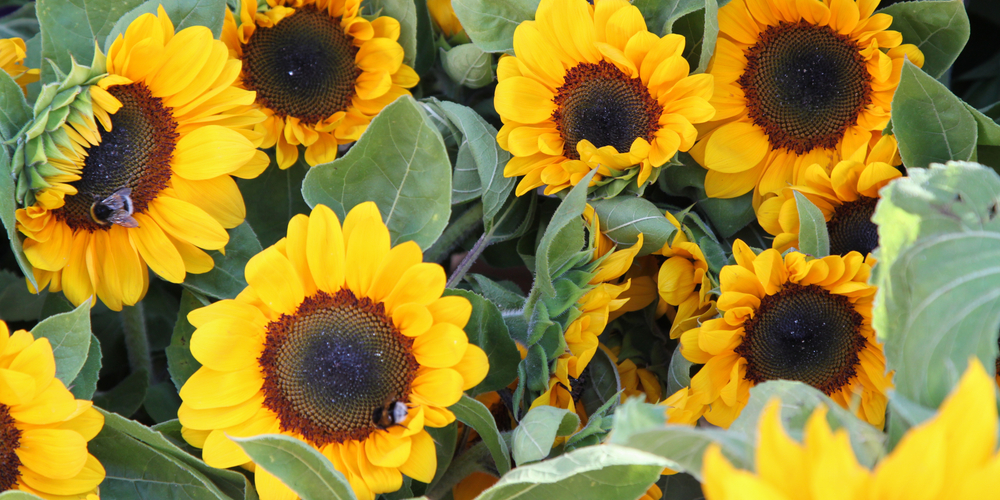Sunflowers are a great addition to any garden. They are heat-tolerant, resistant to pests, and, with their showy, yellow flowers, they attract pollinators as well as birds. The most exciting thing is that they can grow well in the most punishing agricultural regions and are one of the fastest-growing plants. However, gardeners may need to amend the soils for the best results. This post will cover more on how to grow sunflowers in Arizona.
Growing sunflowers in Arizona

For gardeners in Arizona considering growing sunflowers, the good news is that growing sunflowers here is entirely possible. They grow best when planted in spots receiving 6-8 hours of direct sunlight and require long, hot summers to flower well. Thankfully, Arizona’s semi-arid and arid climates provide the ideal conditions for the sunflowers to thrive.
Many people love to grow sunflowers due to their variety of uses. They are easy to grow and not too picky with growing conditions, making them ideal for gardeners of all levels.
For Arizona gardeners, here are tips to successfully establish a sunflower garden.
1. When to plant sunflowers
Arizona summer can be unsparing, but sunflowers are good at surviving or neglecting the scorching weather. That said, the best time to plant sunflowers in Arizona is from February through July. During this time of the year, the soil is consistently warm to aid the growth of root systems.
When it comes to growing sunflowers, you will get the best germination if you plant when the soil temperatures are consistently 70°F to 75°F.
2. Where to plant sunflowers
Flowers need plenty of sunlight to grow their best and bloom. For this reason, they should be planted in a location that receives about 6 to 8 hours of full sunlight daily and is protected from heavy winds.
3. Preparing planting site
Sunflowers are not picky with soils, but they won’t perform well in compact soil. They usually have long taproots that prefer well dug, loose, draining soils.
When preparing your garden for sunflowers, dig down about 2 feet in depth and 4 feet across for giant sunflowers. Smaller varieties are quite forgiving and will grow well with about 1-foot growing space in all directions.
Importantly, although sunflowers are not finicky when it comes to soil pH, gardeners with clay soil will need to amend their soil with compost manure or other organic materials to enhance drainage and enrich the soil with nutrients. This is very important because sunflowers are heavy feeders.
4. Planting sunflower seeds
Sunflowers do like to have their roots disturbed. That’s why it is best to sow them directly on the soil.
When the soil becomes consistently warm, plant your sunflower seeds about 1 to 1½ inches deep and about 1-2 feet apart. For low-growing varieties that branch out, make sure to leave enough room between rows. After sowing sunflower seeds, always remember to protect them to keep birds and rodents from digging them up.
During planting, you may want to apply small amounts of fertilizer to encourage strong root growth.
Water your sunflower seeds regularly and abundantly until they germinate. A layer of mulch can help conserve moisture and keep the growing location cool.
5. Caring for sunflowers
Sunflowers are generally easy to grow, and often the only challenge is preventing wildlife like birds and squirrels from stealing the freshly sown seeds. However, this doesn’t mean there is nothing to do.
When the shoots are small, water around the root zone, about 3-4 inches from the plant, then continue until the plant is established. Once established, water deeply but infrequently to encourage deep rooting.
Because sunflowers are heavy feeders, consider feeding your plants sparingly with nitrogen-rich fertilizer to encourage healthy growth. Should your sunflowers grow above head height, use bamboo stakes to support them.
6. Harvesting
First off, sunflower seeds are a favorite for many wildlife like birds and squirrels. For this reason, if you intend to harvest, you will have to cover the flowers with perforated plastic bags or mesh bags to keep birds away.
When it comes to harvesting sunflowers, you can start harvesting as soon as the seeds start turning brown or the bucks of the seed heads turn yellow. Harvest with a part of the stem and hand upside down until they dry.
How To Grow Sunflowers In Arizona: Conclusion
Sunflowers are one of the drought-resistant and fast-growing crops Arizona gardeners can consider. Although the summer can be brutal here, sunflowers will perform impressively.
Related Article: Can Sunflowers Grow in Clay Soil?

